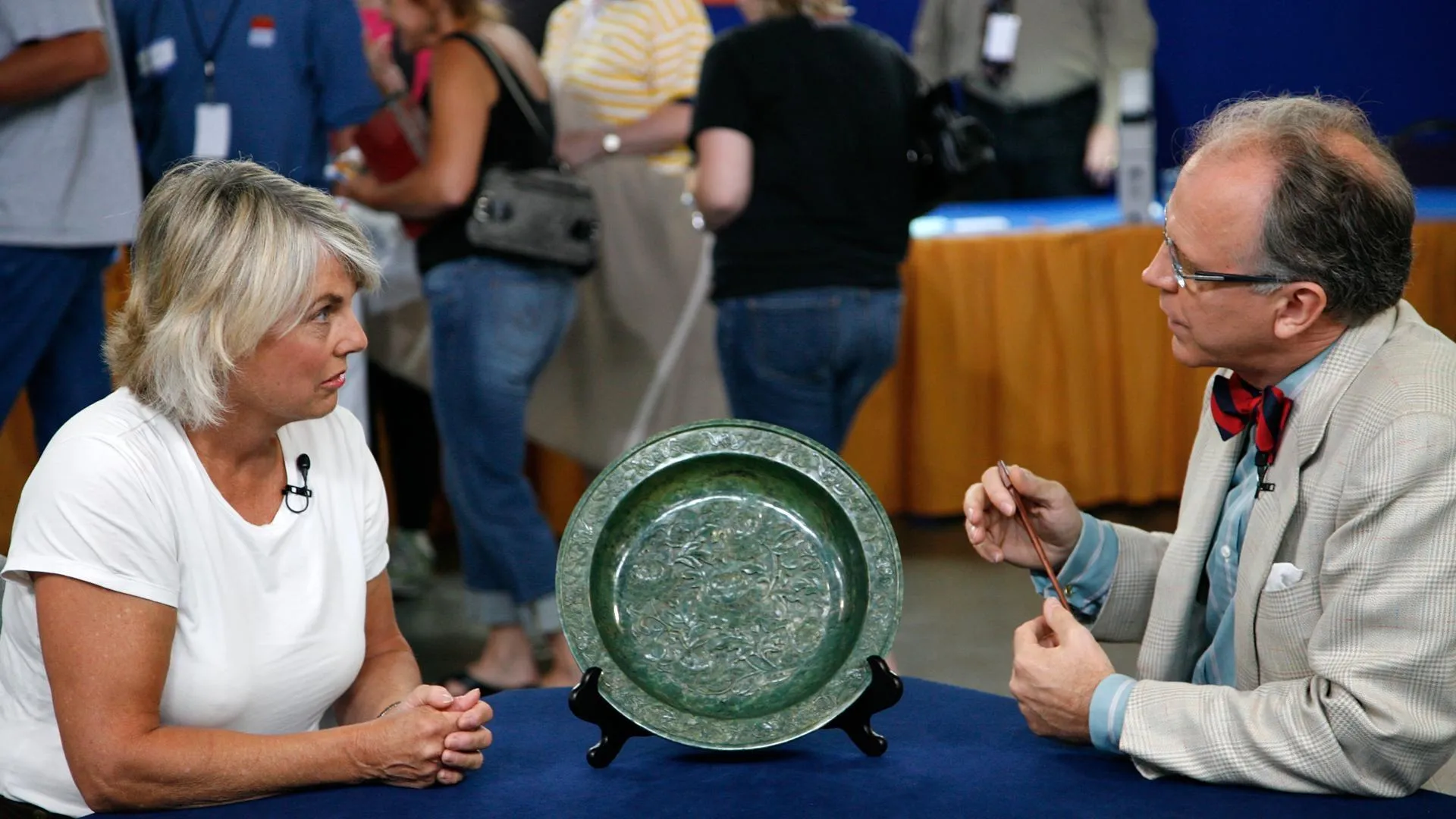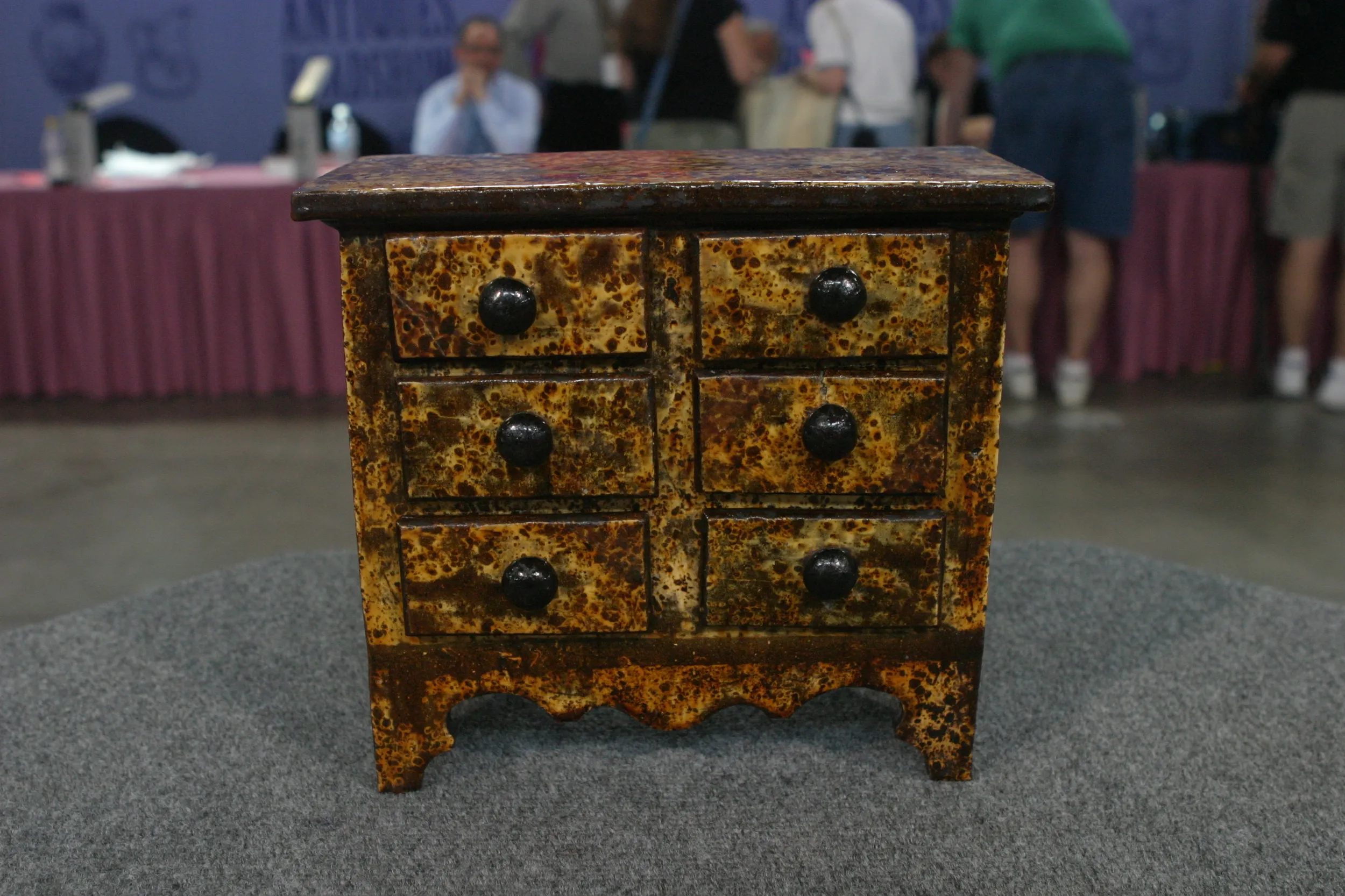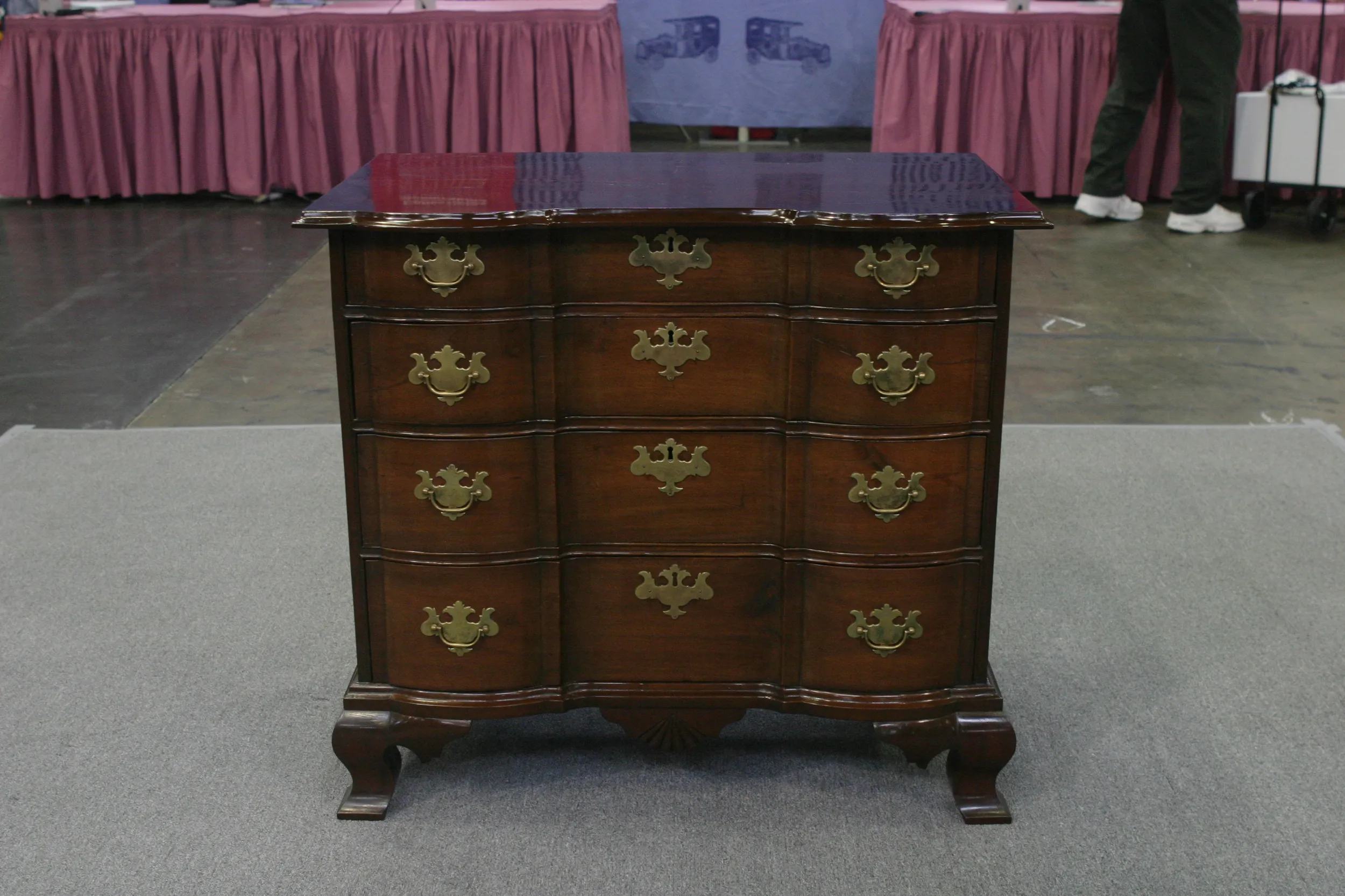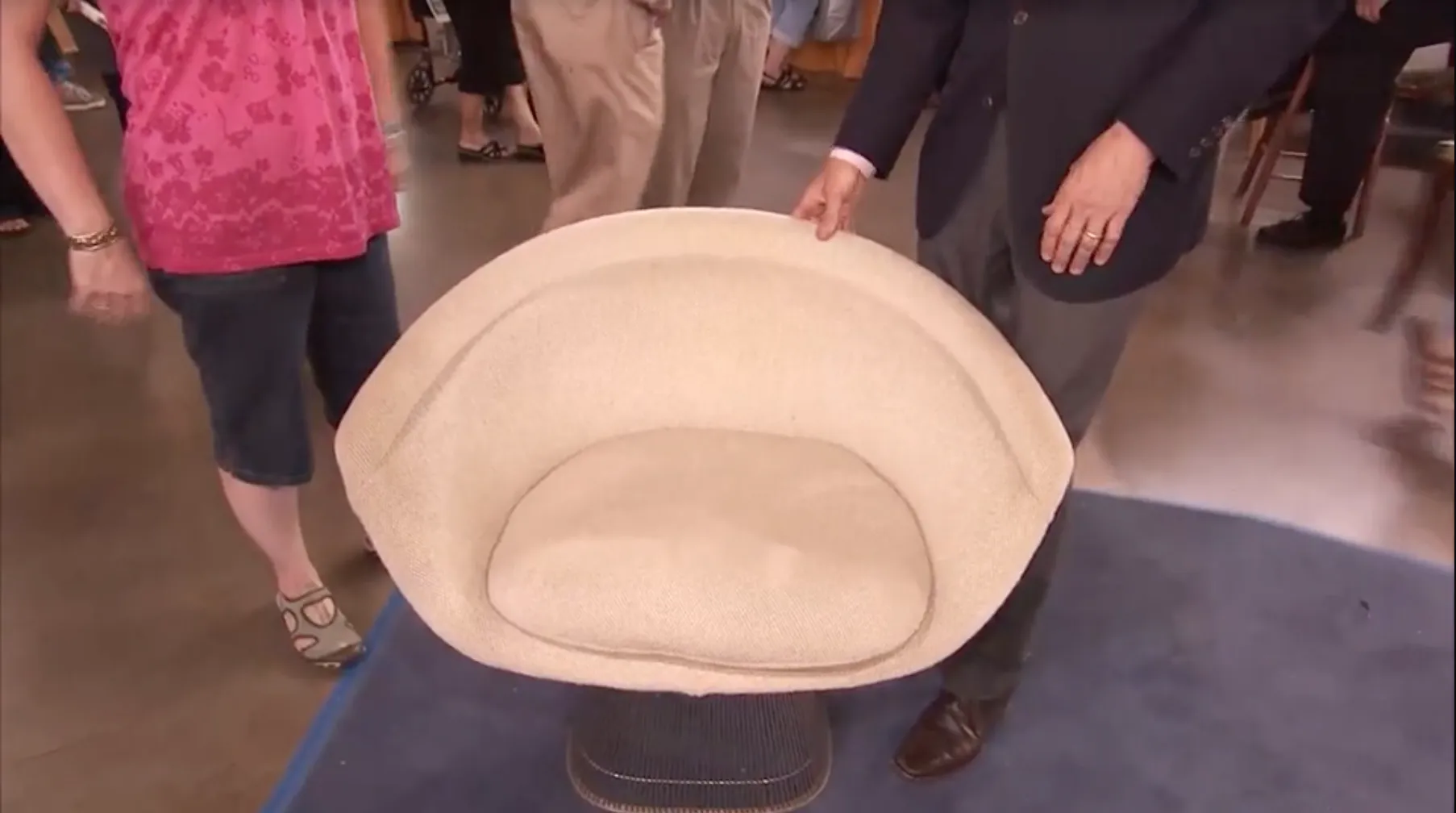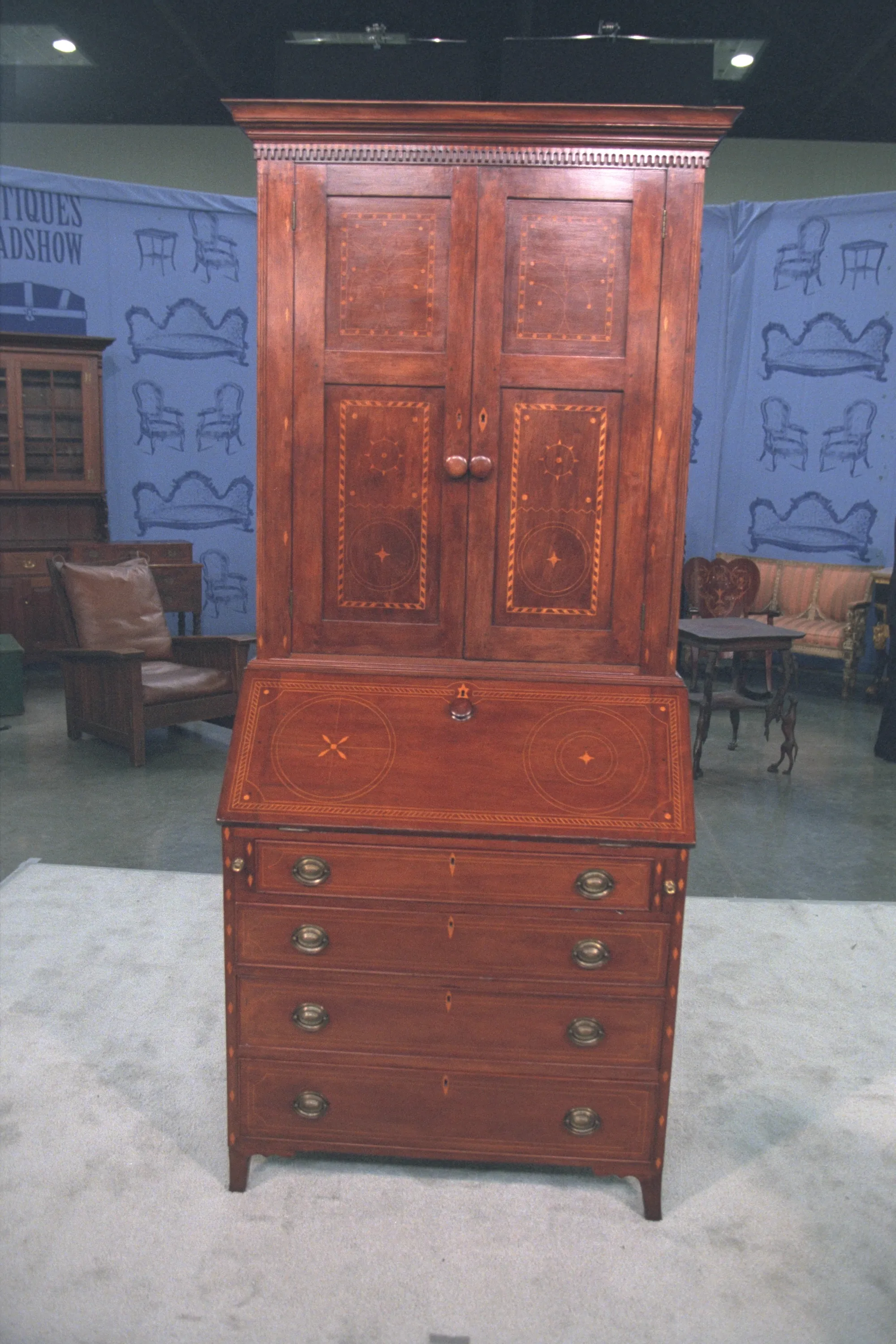GUEST: I've been told that this chest is from Fort Harrod, Harrodsburg, Kentucky, and was built by my great-grandfather--seventh or eighth generation, I'm not exactly sure--and he was a furniture maker in Fort Harrod, and he was the husband of Ann Kennedy Poague, who was supposedly the first female settler in Kentucky.
APPRAISER: Kentucky achieved statehood in 1792. Would this have been slightly
before or slightly after that period?
GUEST: I was told it was slightly before, but I, but I can't confirm that.
APPRAISER: Yes. There must have been family stories told about this, how it was used in the family?
GUEST: It was used as a sugar chest.
APPRAISER: And open it up to just take a look at the interior of this piece. What you notice here are three compartments, and the one thing we've discovered from inventories of households is that in general, these three sections would hold white cone sugar, brown granulated sugar...
GUEST: Mm-hmm.
APPRAISER: And then unroasted coffee.
GUEST: Okay.
APPRAISER: And these were three of the most expensive condiments in the American home at that time. We forget, with sugar everywhere today, how difficult it was to come by. And that's the reason that we have locks on all of the drawers.
APPRAISER: One of the responsibilities of a woman in that period was to keep the keys to these kind of locked areas in a key basket or on her chatelaine. Do you know what the wood is?
GUEST: I believe it's cherry.
APPRAISER: Cherry. And the secondary wood is tooled Poplar.
GUEST: Okay, I didn't know that.
APPRAISER: Which is to be expected in this region. You see these shadows here?
GUEST: Yes.
APPRAISER: Yes, those were where the wrought-iron hinges held. And on that side, as you can tell, it ripped out part of the backing. One of the things that's interesting about this piece, I think, is its large size and its construction. You notice it has tapered legs. Some have rounded legs, but the tapered leg is much more a Hepplewhite element. I would tend to think that this is possibly after statehood.
GUEST: Okay.
APPRAISER: Because the Hepplewhite leg does not come in until the 1780s.
GUEST: Okay.
APPRAISER: And by the time it reached here, it was probably a generation or two later. I've talked to some of my colleagues, and it's our general opinion that a conservative retail estimate would be about $8,000 to $10,000.
GUEST: Wow, wow.
APPRAISER: Because there is a great interest in this Southern furniture today.

